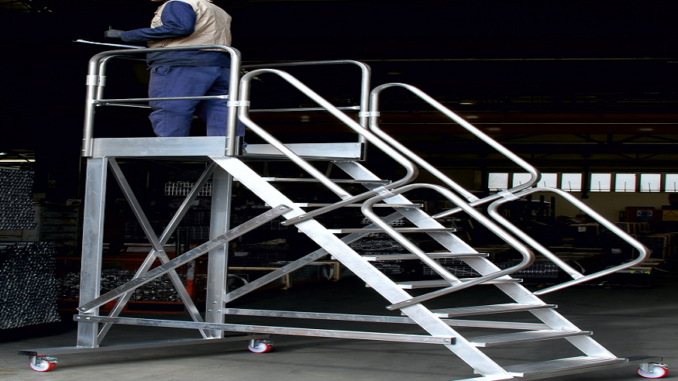
When you invest in high-quality Heavy duty platform ladders from Reflexequip, proper maintenance ensures they remain safe, reliable, and durable over years of use. Below is a comprehensive 600-word guide to caring for your ladders, helping you protect your investment and safeguard your team. You can view ladder models and guidance at reflexequip.com.au.
1. Perform Regular Inspections
The first step in maintenance is frequent inspection. Before each use—and periodically in storage—check all components for wear and damage:
- Inspect steps, treads, and platform surfaces for cracks, dents, deformation, or sharp edges.
- Examine all welds, fasteners, rivets, and joints to ensure nothing is loose, bent, or missing.
- For models with castors or wheels, verify that they roll smoothly, locking mechanisms function, and the wheel housings are secure.
- Check the ladder feet or anti-slip shoes for wear; replace if they no longer provide firm contact with the floor.
- If your ladder has guardrails, gates, handrails, or safety features, ensure these operate correctly and are not obstructed.
These inspections help you identify potential faults early, preventing accidents and extending the service life of Heavy duty platform ladders.
2. Clean and Remove Debris
Accumulated dirt, grease, oil, or chemical residue can degrade surfaces, reduce traction, and accelerate wear. To clean:
- Wipe down rails, treads, and platforms with a mild detergent solution, then rinse with clean water and dry.
- Use brushes or soft scrubbing tools for stubborn grime, but avoid abrasive materials that scratch metal or fiberglass.
- Ensure moving parts such as hinges, hinges, locks, and pivot points are free of debris that might block motion.
- Keep accessories such as steps, brackets, and locking mechanisms clean and unblocked.
A clean ladder is easier to inspect, safer to climb, and less prone to corrosion or premature deterioration.
3. Lubricate & Maintain Moving Parts
Many Heavy duty platform ladders include hinges, locking mechanisms, wheels, or tilt/steer components. For smooth operation:
- Apply a suitable lubricant (light machine oil or silicone spray) to pivot points, hinge pins, locking slots, and sliding parts.
- Avoid over-lubrication—excessive oil can attract dust and gum up parts. Wipe off residual lubricant.
- Grease or oil periodically based on use frequency (e.g., monthly in active use environments).
- For wheeled or mobile ladders, ensure wheels, bearings, and castors are well lubricated and rotate freely.
Proper lubrication minimizes friction, wear, and noise, helping parts last longer and operate safely.
4. Store in Appropriate Conditions
Storage plays a critical role in ladder longevity:
- Store ladders in a clean, dry, covered area—preferably indoors—protecting them from direct sunlight, moisture, and temperature extremes.
- Keep the ladder upright or horizontally supported along its full length to prevent warping or bending.
- Avoid storing the ladder on uneven surfaces, leaning it heavily, or placing weight on any one section.
- If space allows, hang the ladder or use dedicated racks that support the rails evenly.
- Keep the storage area clear of chemicals, corrosive substances, or objects that could fall and damage the ladder.
Well-stored ladders remain true in shape and resist damage.
5. Monitor Load & Usage Conditions
Even with solid maintenance, misuse or overloading can shorten ladder life:
- Adhere strictly to the ladder’s rated load capacity (user + tools + materials).
- Avoid overreaching or sudden lateral loads that strain rails or joints.
- For mobile models, do not move the ladder while someone is standing on the platform. Always engage locks before use.
- Use the ladder only for its intended purpose; avoid using it as a scaffold, beam, or support.
- In aggressive environments (chemicals, high humidity, salt air), inspect more frequently and consider corrosion protection.
Limiting abuse and respecting specifications ensures your Heavy duty platform ladders maintain structural integrity.
6. Repair or Replace Damaged Parts Promptly
If any component is damaged, wobbly, bent, cracked, or no longer secure:
- Immediately remove the ladder from service and tag it “Do Not Use.”
- Consult manufacturer guidelines via reflexequip.com.au to order replacement parts.
- Replace parts such as treads, rails, hinges, or feet rather than attempting jury-rigged field fixes.
- After repair, re-inspect carefully before returning the ladder to service.
Prompt repair avoids cascading damage and keeps the ladder safe.
Conclusion
With careful inspection, cleaning, lubrication, correct storage, controlled usage, and prompt repairs, your Heavy duty platform ladders from Reflexequip can deliver years of reliable service. Maintaining them properly protects both the ladder and your workforce. Visit reflexequip.com.au to find spare parts, maintenance advice, or to explore more ladder models. A well-maintained ladder is a safe ladder and a longer-lived investment.

Leave a Reply
You must be logged in to post a comment.